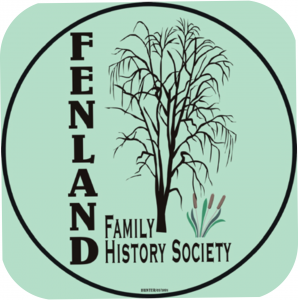Our meeting on July 28th took place at St. Peters Church Upwell. A group of about 50 members & guests were taken first to the west gallery, which gave us a splendid view of the church & especially the east window. Mr Keith Bradley, a member of the church then gave a short talk on the history of Upwell village & the church. Upwell was a very important waterway & port. Sea going ships came from Ely & Peterborough via the rivers Nene & Ouse through Upwell & Outwell to Wisbech & then on to the Wash.
The 7th century saw the founding of a Benedictine priory at Upwell by Etheldreda the founder of Ely cathedral. It was built close to the river & probably suffered attacks from the Vikings. In about AD 969 a further priory was built much farther away from the river.
In the 13th century a new church was built on the site of an earlier Saxon one. This was built with a red brick & iron bound conglomerate which can be seen today. The stone was brought by barge & unloaded at the quayside.
Inside the church we saw the north gallery. This was built in the 1830s to accommodate an expanding congregation. Parishioners were brought to church from surrounding villages by horse drawn barge known as Mr. Townleys Packet. On the front of the gallery we saw the magnificent coat of arms belonging to the Townley family. On the back of the gallery could be seen 2 very long heavy poles with large iron hooks, these were attached to horses to help pull burning thatch from houses.
We then toured the church & Mr Bradley showed us the wall plaque commemorating a crusader’s burial, & several monumental inscriptions on the walls. He pointed out the brass Asiatic cholera memorial, a time when 67 people died from the disease. At the chancel steps we saw the lectern, which is made of the yellow alloy known as latten, & the pulpit to the right of the centre aisle, which is unusual, because this positioning is usually only found in a cathedral. On looking up we could see the beautiful angel roof.
There was time to wander around the church after partaking of splendid refreshments supplied by the ladies of the church. We were able to look at the altar silverware & learned that this was kept in pristine condition by using only hot soapy water & a soft cloth. Registers of births, deaths & marriages were on display & people were able to look at them & discover some of their own family connections.
Several people took the opportunity to visit the graveyard & look at the cholera graves & the area of the Quaker burials. The Roman pavement (tesserae) found when digging in the graveyard is now set in the ground outside the west door.
A splendid evening came to a close with the presentation to Mr Bradley of a CD of the Monumental Inscriptions from the graveyard & those inside the church. This was produced by members of the society.
We would like to thank Mr. Bradley, & the ladies who supplied refreshments for a most enjoyable evening, & also Rev. Jesson for allowing the group to visit this fascinating church. There is an information booklet available in church which would help people enjoy their first or return visit to this great building.
[Barbara Holmes]
January meeting: Kevin Rodgers – Wisbech workhouse
As most members know, Kevin is a prolific writer on Wisbech local history. He owned up that after publishing a book he tries to forget
